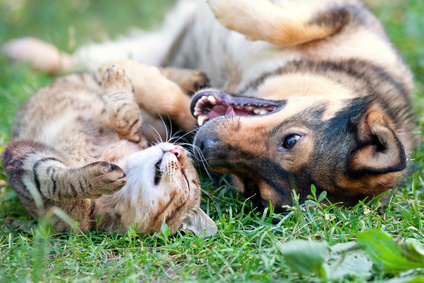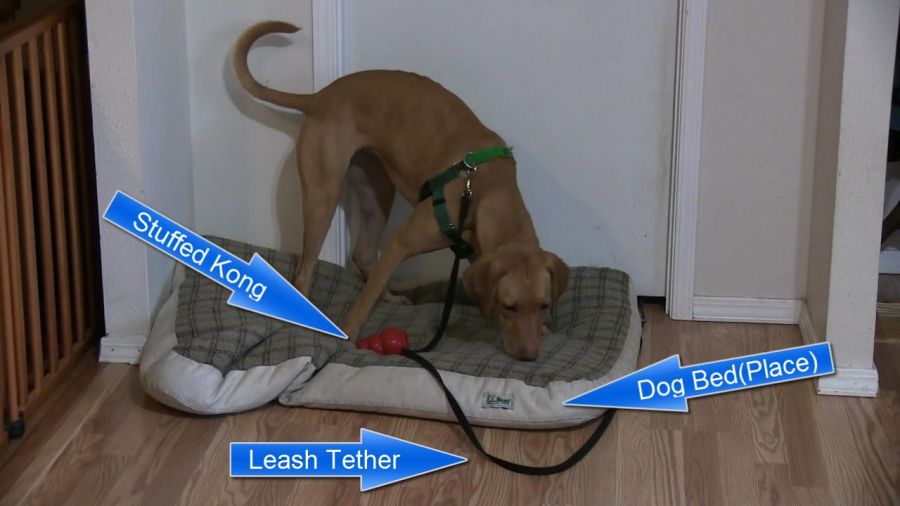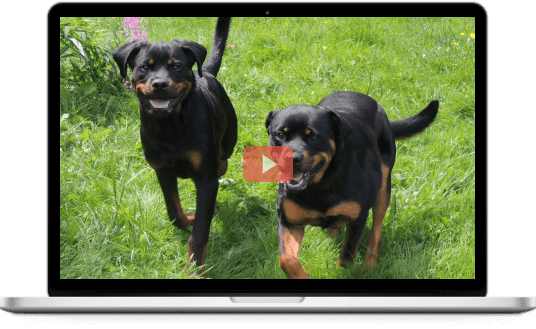9 Procedures that Improve Your Dog and Cat’s Relationship

A healthy cat and dog relationship is built on mutual trust between the two animals. Trust is attained on the cat’s behalf when they confidently know that the dog will not aggravate or cause them harm.
Every cat and dog relationship will be a different in how they interact with each other, but there are specific exercises and procedures that will aid in developing an overall happy or at least a tolerable coexistence.
Start today incorporating these 9 Procedures:
1) Don’t Allow the Dog to Chase the Cat
This is the most important rule and the most difficult to prevent when you are unsure how to accomplish it. Often when I am called in to assess a dog and cat problem, the cats have moved from their previous residence in the living room to the upstairs bedroom. They do this usually to avoid the dog accosting them anytime they walk across the floor.
One of the most useful tools to prevent cat chasing is a tether (Click Here for more information on the tether).I recommend using a tether until you can train the dog sufficiently to listen to your commands and the dog can be trusted not to chase the cat. A tether will keep the dog to a confined area. I usually recommend a 4-6 foot range for most situations. The tether also gives you a chance to reward appropriate behavior because the tether itself prevents unwanted behavior (chasing the cat)
2) Train your Dog to Respond to the Place Command(stay on a dog bed) and the Leave It Command
Training your dog to respond to these two commands will allow you to control the dog around the cat which is crucial for the cat to build confidence around the dog. The Place Command acts as a control area for your dog while your cat is allowed to explore the room. The Leave It command is used as soon as the dog begins to give chase to instruct the dog that this behavior will not be allowed.
I show you how to teach these commands in the member’s area if you need additional help training your dog to perform these tasks.
3) Reward Your Dog and Cat for Good Behavior Around Each Other
This sounds so simple, but owners often overlook this practice. Many times, owners are so happy and proud of these moments that they watch and observe ecstatically rather than taking the opportunity to reward the animals’ polite behavior. Let your dog and cat know that well-mannered behavior will bring them praise and treats.
In the early stages of training, you will have your dog on the tether and this creates the perfect opportunity to reward good behavior. When the cat comes into the room or someone carries the cat into the room, you should instantly reward your dog with a stuffed Kong toy or delivering repeated treats from your hand. Your dog will start to pay attention to you or the toy because being calm and eating treats is much more appealing than hitting the end of the tether over and over again attempting to make contact with the cat. If the dog does not pay attention to the food rewards, then you should first try changing up they type of reward.
*Don’t forget to reward the cat also for being in the same room with the dog. This will help create a positive association for the cat to being in the dog’s presence.
(Below is an example of a tether set up for early training sessions)

4) Implement a Consequence for Chasing the Cat or Ignoring your Command
After a few days or weeks, you will have been practicing the Leave it command and the place command to a point where you want to test them without the tether. More than likely, you will have a few times in which the dog will ignore the command because the cat’s movements are just too irresistible. This is when an effectively implemented Time Out comes into play.
Here is how to instill the Time Out: Say “Leave it” as soon as you see your dog eyeing the cat in that stare you have come to recognize before chase begins. When the dog ignores your Leave It command and gives chase, you shout “TIME OUT” or “TOO BAD” and then immediately take the dog to the time out location.(It is usually helpful if the dog is dragging a leash so you can get to the dog quickly and take them to the Time Out location)
Repeat this process as necessary while you are training the Leave it and Place command. Your dog will need a few Time Outs before they begin to understand how this process works. Make sure you are consistent and diligent. The Time Out is very effective when implemented properly.
The Time Out location must be perceived as negative by the dog. I generally use a specific tether location in the home where they are as far away as possible but I can still supervise them. A 2 minute time out is sufficient. I go into Time Outs in detail in the member’s area if you need some help troubleshooting. Also remember to reward your dog for compliance to the Leave it command and The Place command.
5) Monitor and Allow Positive Interactions
Dogs are very social animals and will often seek out the company of the cat even if a fun game of chase isn’t on their mind. If you are lucky to have a dog and cat that enjoy each other’s company at times, then you should allow mutual curiosity. This will often occur once the dog has had a few weeks of tethering and training exercises and both animals have been rewarded for good behavior around each other. You can and should allow playful interactions, but be ready to interrupt it as soon as one animal has had enough. Supervision is critical during these interactions.
6) Provide Escape Routes for the Cat
Your cat will be much more confident around your dog if they have escape routes that they can access anytime the dog begins chasing. You will want to set up cat trees and baby gates in your house to create easily accessed escape paths. Elevated areas that the cat can climb or jump onto should be in every room that you are going to allow the dog and cat to hang out in. This is especially true if the cat has been declawed and has no method of defense.
7) Provide Alternative Games for Both Animals to Satisfy Natural Chase Instincts
If you have a dog that enjoys chasing your cat, then they probably enjoy chasing other moving objects. It is your job to provide appropriate chase outlets for your dog. Planned chase exercises provide excellent training opportunities. If you have a dog that enjoys chasing a ball, then you can begin training your dog to listen to commands when they are in an emotional state that resembles cat chasing. If you can have your dog stay while you toss the ball or have your dog perform a Leave it while they are chasing the ball, then you are much more likely to be able to control your dog around your cat. This happens because you begin building up impulse control in your dog.
8) Practice Training Sessions
Training sessions are essential for teaching your dog how you want them to act around the cat. If you find yourself always reacting to your dog’s behavior, then you are not showing them what you do want them to do when the cat is in the same room. Teach your dog what you want and then reward them for doing it. Plan a few short sessions a day and work on Place and Leave it exercises and have your Time Out station set up and ready in case you need to use it.
9) Incorporate a Basket Muzzle
Sometimes owners are unsure what would happen if the dog made contact with the cat. This is especially true for owners who have adopted an older dog. Condition your dog to a basket muzzle and have them wear it while you are training and observing your dog around the cat. This procedure will ease your nerves by providing safety in case the dog is able to corner the cat. You can tell a lot about a dog’s intentions even when they are wearing a muzzle if they have been conditioned properly and feel comfortable in the muzzle.
Summary
Incorporate all of these procedures to start making a positive change in your dog and cat’s interactions. Don’t allow your dog to participate in behavior that makes the cat uncomfortable. Incorporate management protocols such as tethers or crates until you can train the dog to listen to your commands. Remember to reward both animals for being polite with each other. Make sure your dog is getting adequate exercise so that chasing the cat does not develop into the dog’s main goal each day. Set up training sessions where you have a plan rather than only reacting to unwanted behavior. Keep your cat safe by incorporating a basket muzzle if you are unsure what your dog’s intentions are when they give chase.
Published on July 23, 2017
2 Free Lessons!
Hi, I'm Tommy Grammer and I have helped thousands of dog owners just like you.
I teach people how to train their dogs and resolve behavior that is causing owners frustration. Sign up for my free tips and as a gift to show you how my methods work, I will send you 2 sample lessons from the members' area!

Unleash your dog's potential by learning how to train like a professional trainer.
Train Your Dog
The Gift of Training
A My Dog Training Spot 12 month membership makes a wonderful gift, any time of year. Give a dog owner you care about the gift of training!


